Aadi Natya Samarpan, organised under the aegis of Bharatiya Vidya Bhavan, Mylapore, saw three short dance dramas performed one after the other. These well-crafted acts celebrating the Tamil month of Aadi were the result of creative minds coming together.
Deepa Ganesh, artistic director of Upasana, brought together three senior teachers – Sheela Unnikrishnan, Jayanti Subramaniam and Anita Guha – coming from different lineages, to present a colourful garland for the various forms of the Goddess.
Deepa’s arduous research under the guidance of Tamil scholar S. Raghuraman unraveled the complexities of this art form, as if one had time-travelled from the interiors of Tamil Nadu to its stylised urbanised form and presentation.
Aadi Asarippu of Sridevi Nrityalaya performed at Bharatiya Vidya Bhavan’s Aadi Natya Samarpanam. | Photo Credit: SDN’s Insta handle
A charming group of dancers from Sheela Unnikrishnan’s Sridevi Nrityalaya presented ‘Adi Asarippu’ as a praise to Shakti. The costumes and props used set the rural atmosphere. In particular, the recorded music transported one to the village’s Amman temple.
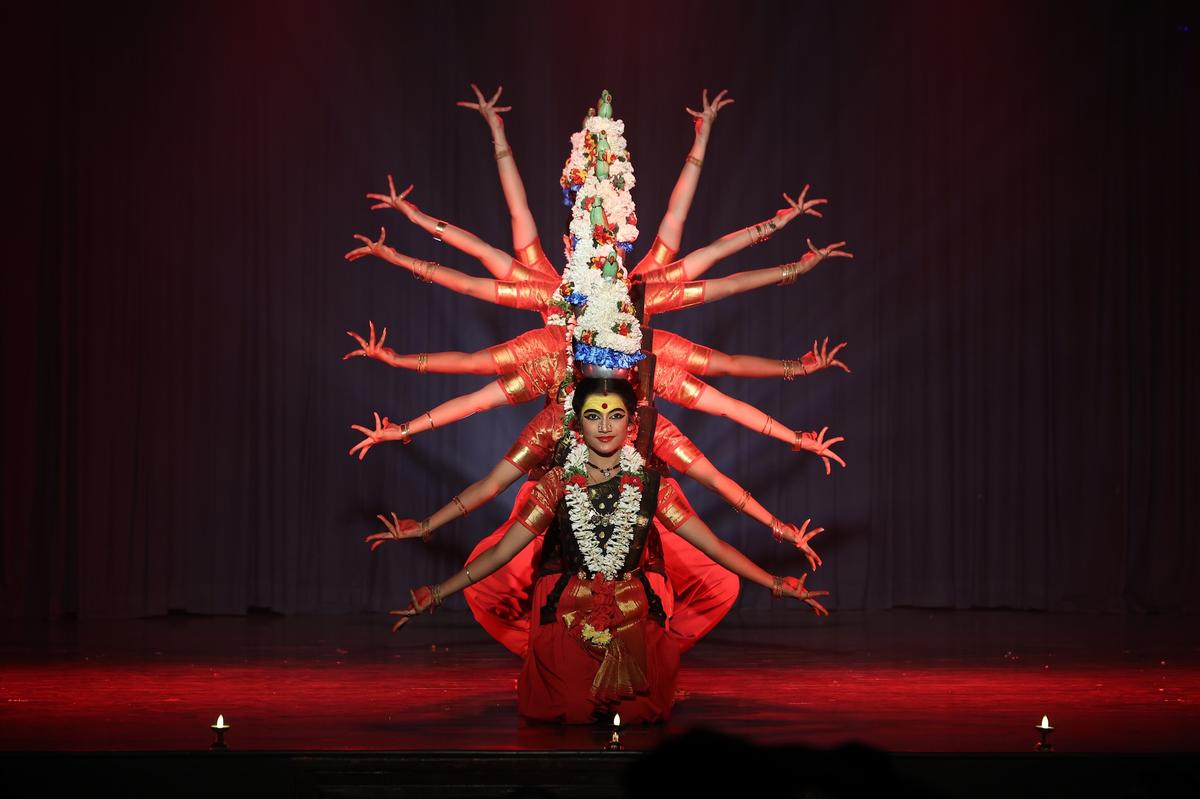
Karagattam performed by the students of Sridevi Nrityalaya. | Photo courtesy: SDN’s social media page
The folk dance Kummi opened the Aadi festival, while the dancers concluded their performance with Karagatham. Despite some omissions in the group pattern, rigorous training and practice was evident in the presentation. The edited version of Kavuthuvam and Andal’s union with her master gave the evening a perfect start.
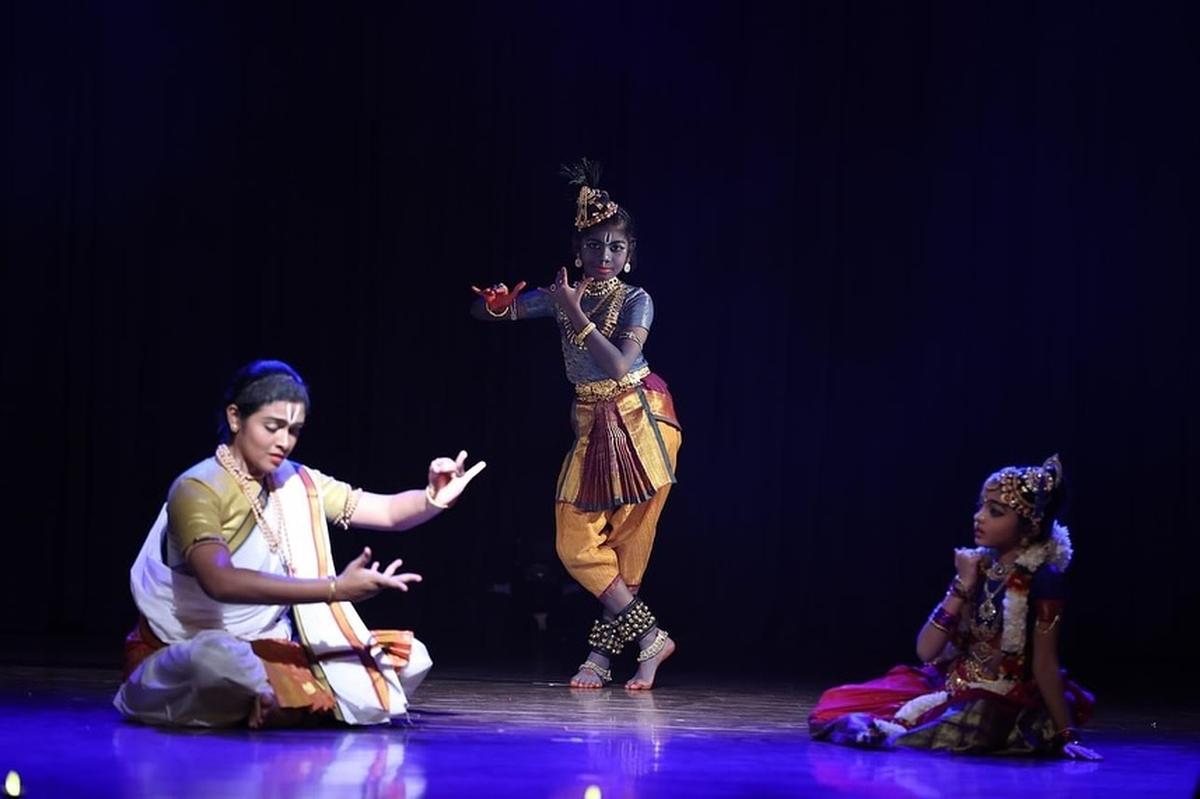
The story of Andal and Krishna’s union was very well crafted. | Photo Courtesy: SDN’s social media page
Well executed theme
The performance of the students of Jayanti Subramaniam was based on classicality.
‘The Goddess Across Time’ depicted her glory from the Sangam period to Meenakshi Pillai Tamil (17th century). The choreography celebrated the Goddess’ power, valour and victorious path. War and weapons were brilliantly portrayed through vibrant rhythms, expertly played by mridang player MS Sukhi.
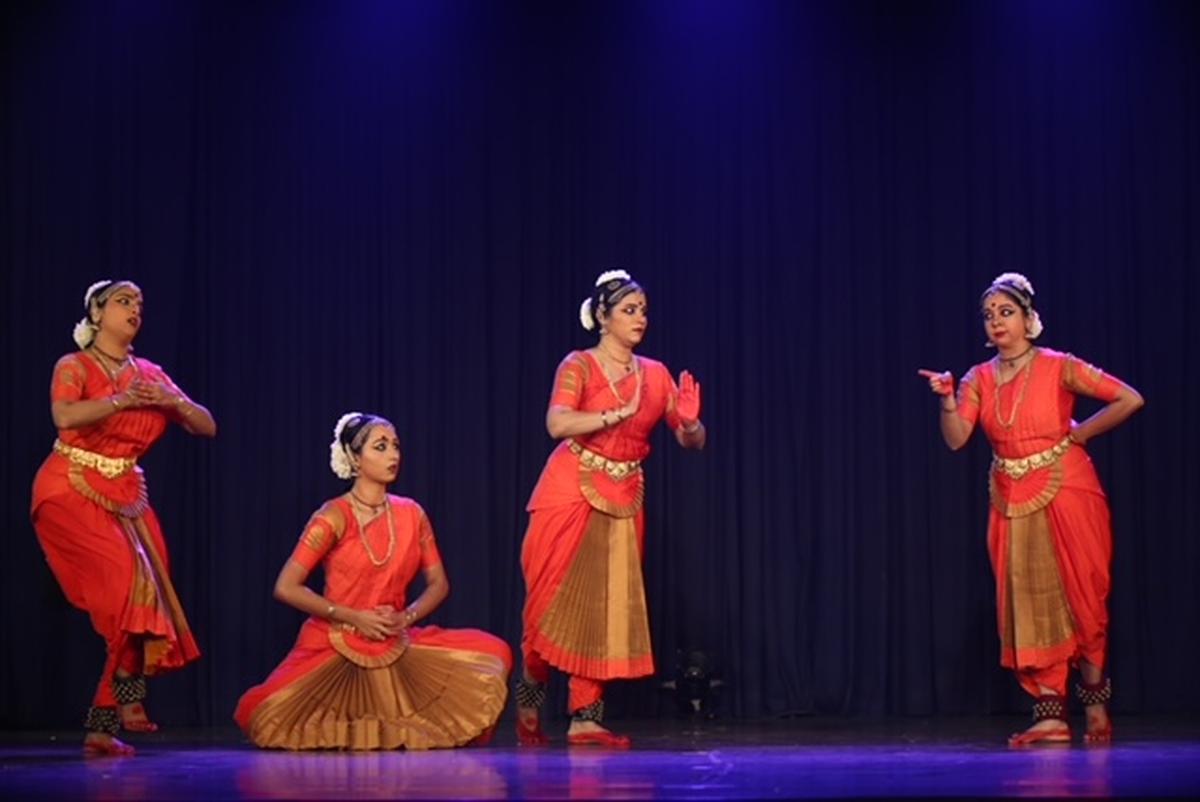
Jayanti Subramaniam’s ‘The Goddess Across Time’ was presented at Upasana’s ‘Adi Natya Samarpanam’. | Photo Credit: Special Arrangement
Nandini Anand Sharma’s musical compositions and performances for ‘Kotravai Vazhipadu’ brought the heroic era of the Goddess alive again. The power of Jayanti was clearly visible in her Nattuvangam.
In stark contrast came the soothing ‘Ambulippruvam’, in which the mother calls the moon to come and play with her child. The four attitudes of ‘Chaturupaya’, or Sama, Daana, Bheda, Danda were well represented by the four dancers in turn. A personal observation is that while the moon’s position was recorded continuously through mukhabhinaya, there could have been changes in between in the continuous communication with the steady drishti. Though the essence of the composition came across, the gentle nritta sections would have enhanced the effect.
The ragas chosen by Nandini Anand Sharma were apt for the mood that was created to slowly woo Chandrama. The selection of Yamuna Kalyani was an apt start. Jayanti Subramaniam’s acting training must be applauded
The performance highlighted how history and literature can be explored through dance.
Powerful Narrative
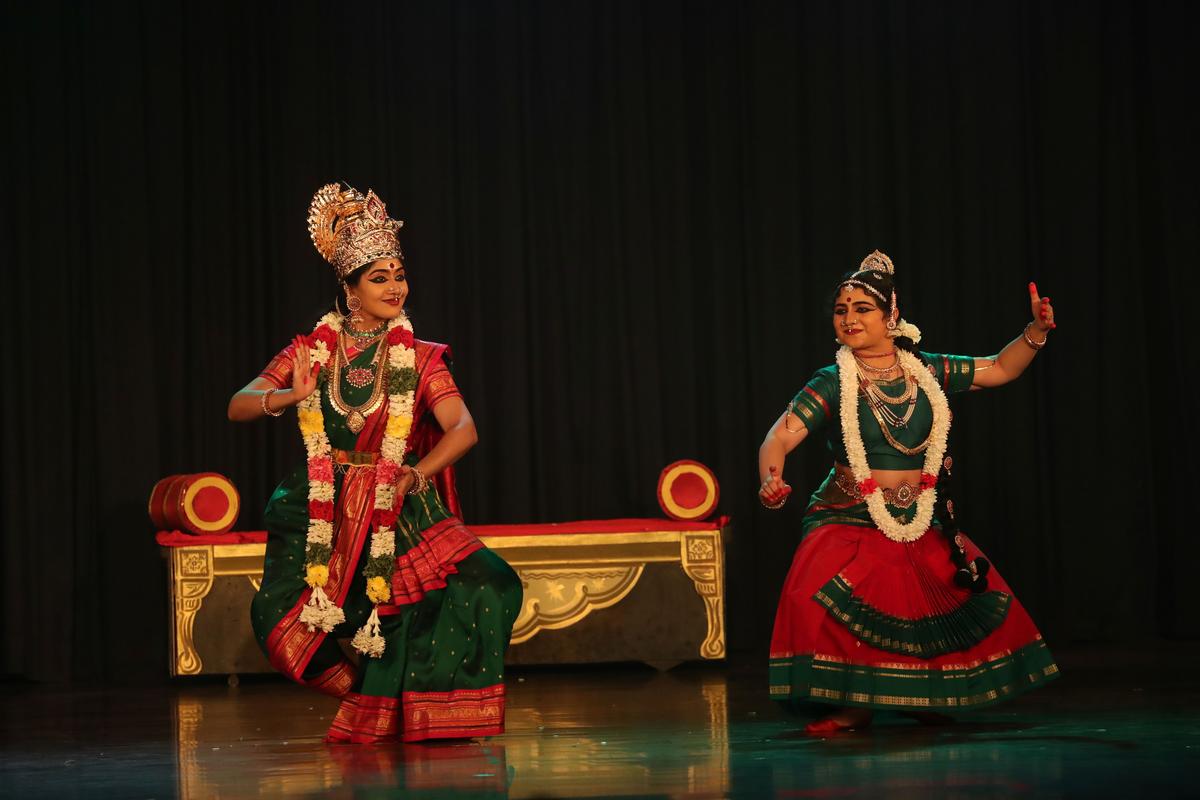
Dance presentation from ‘Shri Bala Tripurasundari’. Photo Courtesy: Bharatiya Vidya Bhavan
The dramatic transformation of ‘Sri Bala Tirupursundari’ by Anita Guha, an expert in the traditional dance drama format, gave a glimpse of the power of the Goddess. Lalita Mahatmyam And from other relevant texts, Anita came up with a compelling narrative.
Vigorous dance pieces were conceived to suit this theme. The depiction of Hansam carrying the child goddess and various figures worshipping her were the main attractions.
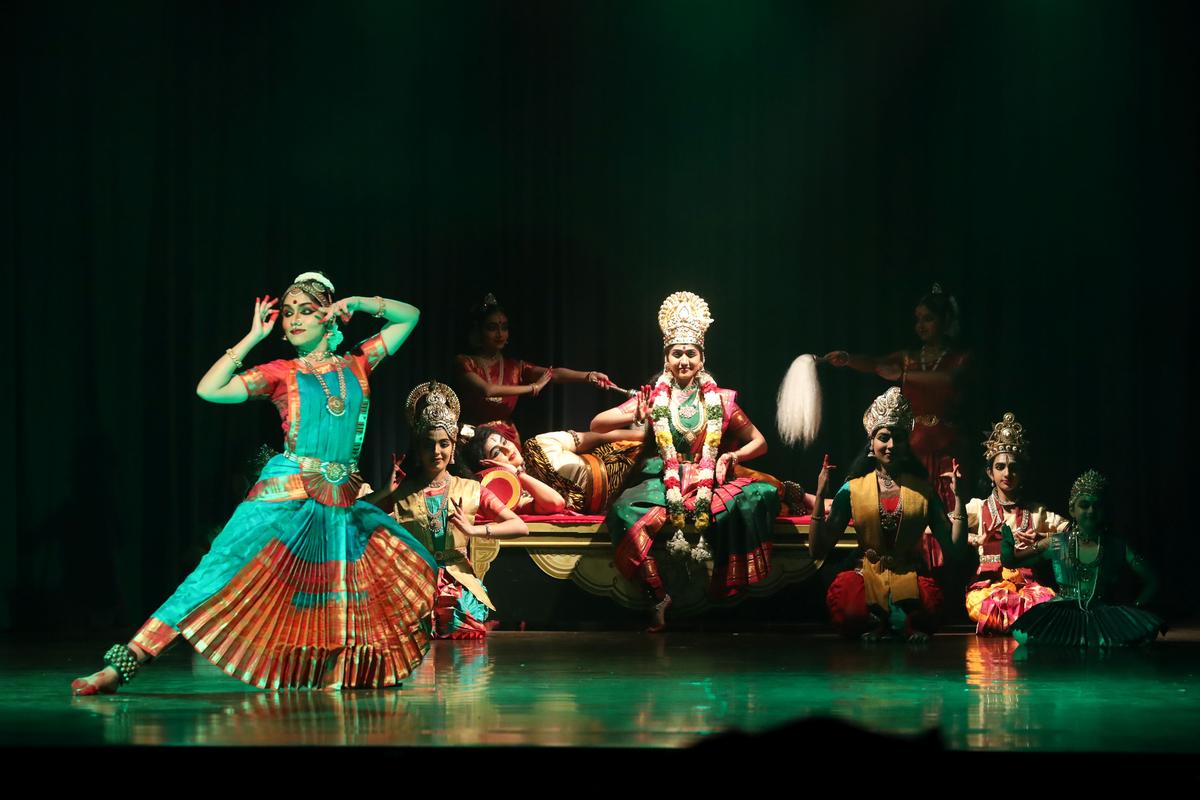
‘Sri Bala Tripurasundari’ was a symbol of power. | Photo Credit: Courtesy: Bharatiya Vidya Bhavan
PR Venkatasubramaniam was the man behind the music group. His association has been immense, being an integral part of the making of Anitha.
Anita’s skill in presenting the story in a concise manner and giving equal space on stage to her large group of dancers deserves special mention.
Segments such as celebrating the Goddess in her child form in ‘Sri Rajarajeswari’ and showing a mother’s anguish while allowing Sri Bala to fight Bhandasura were well-placed. However, the change in tone during the battlefield scene was disturbing.
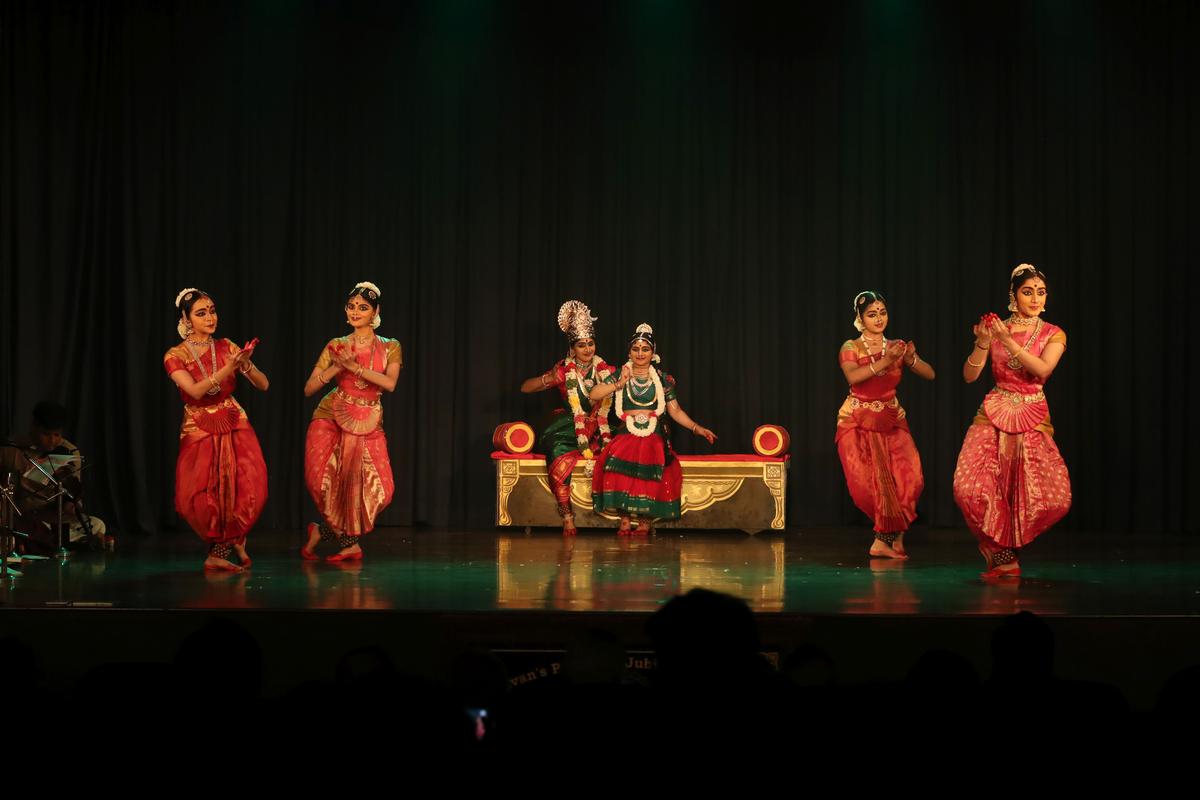
Music and lighting add to the charm. | Photo Credit: Courtesy: Bharatiya Vidya Bhavan
The glow of the light dimmed as Sri Bala Tirupursundari appeared as a divine light!
In the performances of Jayanti and Anitha, the effortless rhythm of violinist Vishwesh and the melodious playing of young flutist Advait are worthy of appreciation.
Aadi Natya Samarpanam emphasised that any festival is incomplete without art as it establishes a connection between the world and the inner soul.
